Following the loss of a life in a plunge pool in Dabhosa recently, we invited trekking experts and seasoned mountaineers to share tips on how to stay safe on your next outdoor expedition
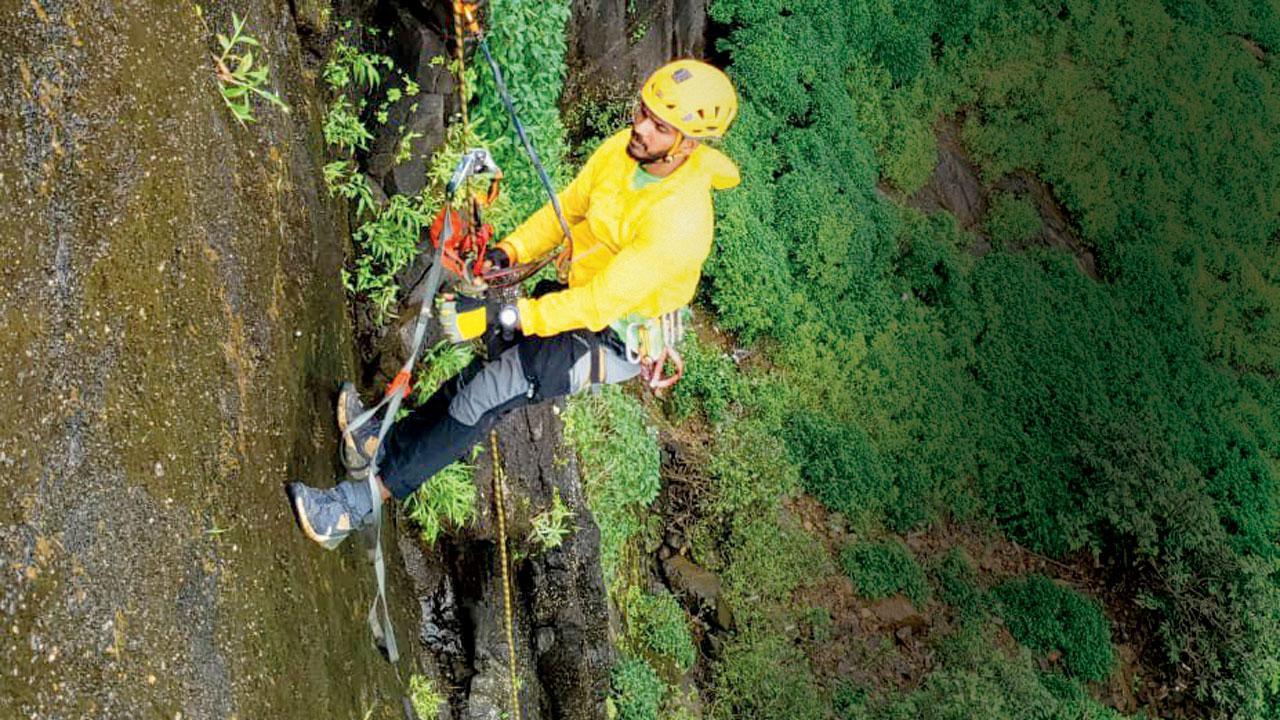
Yogesh Umbre climbs a cliff at Lion’s Point in Lonavala
Earlier this month, a 24-year-old man lost his life and his friend was severely injured while jumping from a height of 120 ft into a plunge pool in Dabhosa in Palghar district. The inspector-in-charge at the nearby police station where the incident was reported, said that the water levels were low in the plunge pool and that this could have been a possible factor for the death. With the monsoon expected to arrive next month, and the trekking season in Maharashtra all set to pick up, it is important to adhere to basic safety guidelines and ask the right questions before you set out on your next adventure.
Access management systems
“India has no access management systems. No matter how long or short the duration of a trek is, operators must have the correct permits. This becomes a form of access management. While guidelines are in place, in certain places, there are still many gaps in the system. We must first acknowledge the gap and then work on it. If they don’t have registration, operators should not be allowed to conduct any commercial adventure travel activity,” says Vaibhav Kala, vice-president, Adventure Tour Operators Association of India (ATOAI). “If it’s an established picnic spot or a trail that the government knows is witnessing traffic, is there nobody to tell trekkers what the code of conduct needs to be? In the case of plunge pools, for example, a risk assessment has to be done to record what the water levels are and whether it is safe to dive or not. Every activity must have risk assessment and a system to authenticate, authorise, and audit access, which is largely missing,” Kala explains.
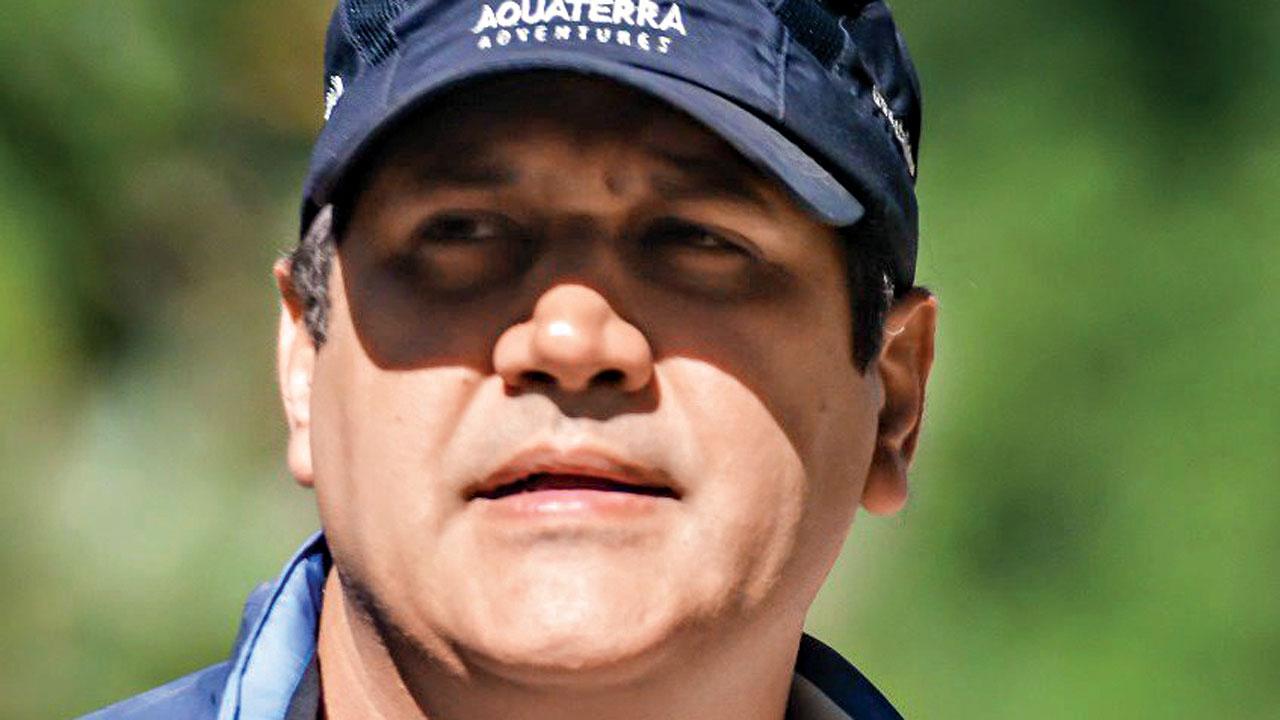
Vaibhav Kala
The ATOAI works closely with the industry and the governments at the central and state levels, to advocate policies, study trends and create a safe environment for participants in adventure activities across 31 verticals. They have worked with the Central Ministry of Tourism to help formulate a national strategy for adventure tourism, which will, hopefully, encompass access management for commercial operations and this will hopefully be implemented soon.
Planning ahead
Jaya Balakrishna, ex-Indiahikes trek leader and a passionate hiker, believes that risk management and preparing ahead is key to avoid unhappy accidents. “Assessing hazards and developing situational awareness is the first and foremost thing to do when outdoors. Most times, safety doesn’t surface in conversations regarding a trek. This doesn’t mean that safety isn’t important. But safety means “freedom from harm”— it implies a guarantee that no one can undertake, especially in the wilderness. Instead of focusing solely on safety, we should focus on the idea that, while we can’t guarantee safety in the wilderness, we can learn to manage risk and minimise the likelihood of a serious incident. You can prepare yourself to respond to these types of events by having a solid trip plan before you go,” Balakrishna points out. “Courses like Wilderness First Responder help bring awareness and the hands-on experience with mock accidents and the first aid training imparted help to those in the outdoors to survive the wilderness,” she adds.
The social media trap
According to Yogesh Umbre, a professional rock climber, mountaineer, and part of the rescue operation team at Shivdurga Mitra Lonavala since 2008, many accidents these days have been caused because trekkers are trying to impress their social media followers. “In the recent past, we have seen incidents where trekkers deliberately take more risks to get more viewership and likes on their social media content. They also seem to lose concentration and focus all their attention on getting the perfect selfies. If the same attention was paid to safety, many accidents could have been avoided. Some trekkers follow other ‘influencers’ and set off on a trek without much knowledge about the place. They head to a destination without preparation, because it looks good and pay no attention to details,” Umbre warns.
Seasoned trekkers and expert guides share their safety checklists:
You come first
Know yourself. It’s always good to fairly assess your capabilities before signing up for an adventure. This includes checking with your doctor about medical conditions. Don’t push yourself to do something that you are not prepared for, physically or mentally.

>> Answer some vital questions: does the trek require preparation beforehand? What’s the best packing list for that terrain/weather? Have you been in that environment before and if not, what is the best way to adapt?
>> “There is no such thing as bad weather, only bad gear”, is a motto I swear by. It’s always good to have high-quality gear that will protect you in adverse weather and terrain.
>> Learn basic outdoor skills — consuming enough energy by ensuring enough carbs and protein intake, going slow and steady, navigation skills, and setting up camp before sunset are some of the key skills.
Shikha Tripathi, travel writer and founder, Snowfox Escapes
Attention to detail
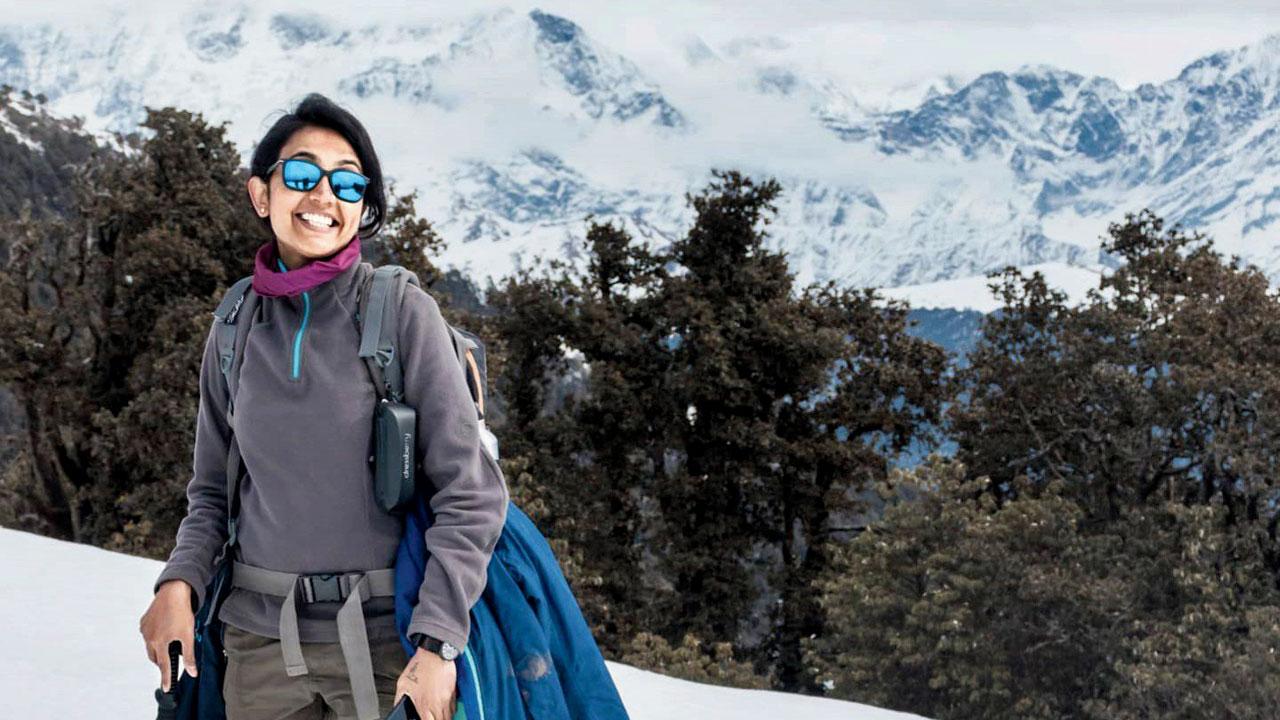
>> Do thorough research about the place you are heading to. Secure details about water resources, camping spots and cliffs. Be aware of the entry and exit points.
>> Avoid venturing alone; taking a local guide is helpful.
>> Keep track of the time. Begin and end early.
>> Download offline maps if available (Gaia, Wikiloc, Strava are some good apps to install)
>> For forest and jungle trails, learn about its wildlife and their movement beforehand. Also, forest permissions/permits are a must.
Meghna Kushalappa, founder, Treks n Tales
Group decisions
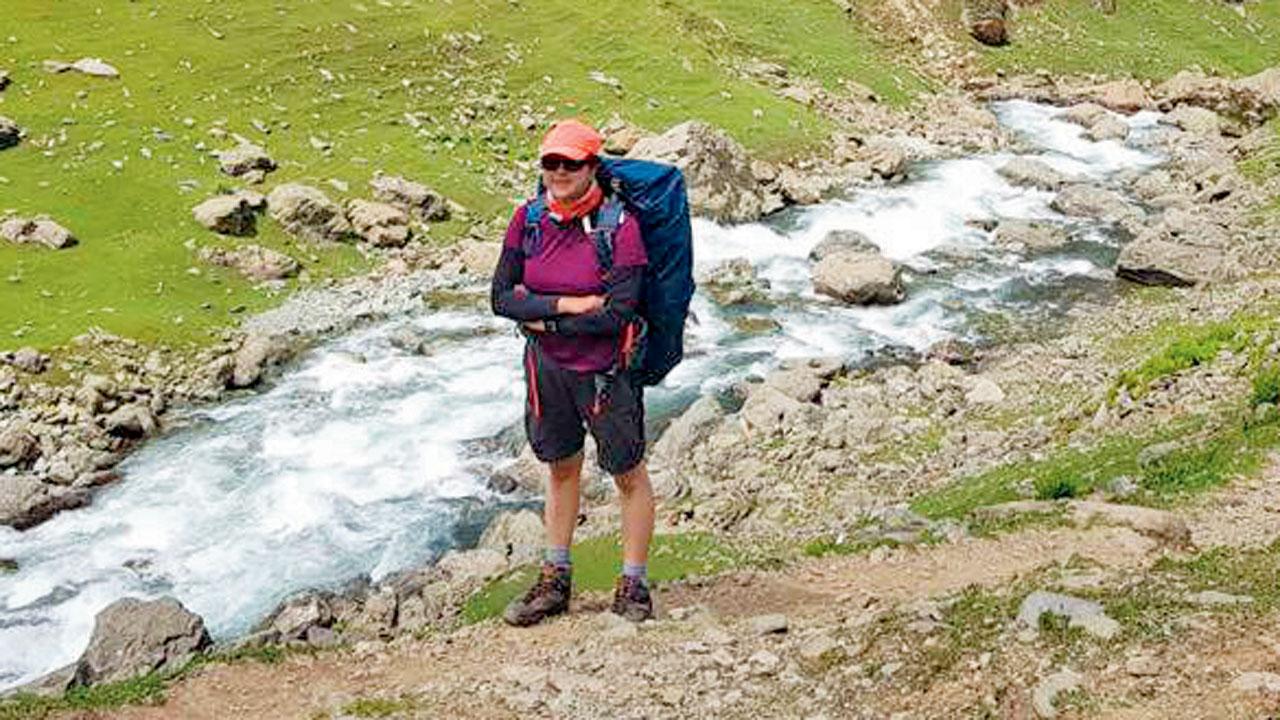
>> If you’re climbing high peaks, be aware of the timing of afternoon thunderstorms. If you’re heading for a hike, study trail conditions so you can plan ahead for a route that’s muddy or slippery.
>> Discuss expectations as a team. It’s easy to assume that you and your friends have similar expectations and training, or that you think about risk in the same way. In reality, you are likely to find important differences that you may need to consider.
>> In group treks, check if everyone understands the plan and can implement it. If only one person has first-aid training, and that person gets injured, what’s your back-up? It is also a great time to check your first-aid kit to make sure your supplies are well-stocked.
Jaya Balakrishna, professional trekker and group leader
When it rains
>> It’s a common sight in the monsoon to see people wearing sandals and rubber chappals while trekking in the Sahyadris. This can be dangerous. Proper clothing and shoes play an important role in ensuring safety on treks.
>> Avoid the selfie obsession while trekking. Take photos while resting or camping but keep both hands free while climbing.
>> Carry a small laminated note with emergency contact details During day treks, share your live location with a friend or family member who isn’t on the trek with you.
>> Almost all lakes, especially near Pune and Mumbai, are strictly no-swimming zones because most of them are backwaters of dams and hence, have undercurrents. Do not swim in any water body in the monsoon.
>> Don’t disturb wildlife, especially snakes during forest trails. Most people aren’t aware of the difference between a non-venomous rat snake and a highly venomous Russell’s viper.
>> Most forts have a main route with a staircase leading up; many don’t, and those are best avoided.
>> Carry at least 4 litres of water in the summer
Saptarishi Bhattacharya, seasoned trekking and wildlife enthusiast
Local knowledge is key
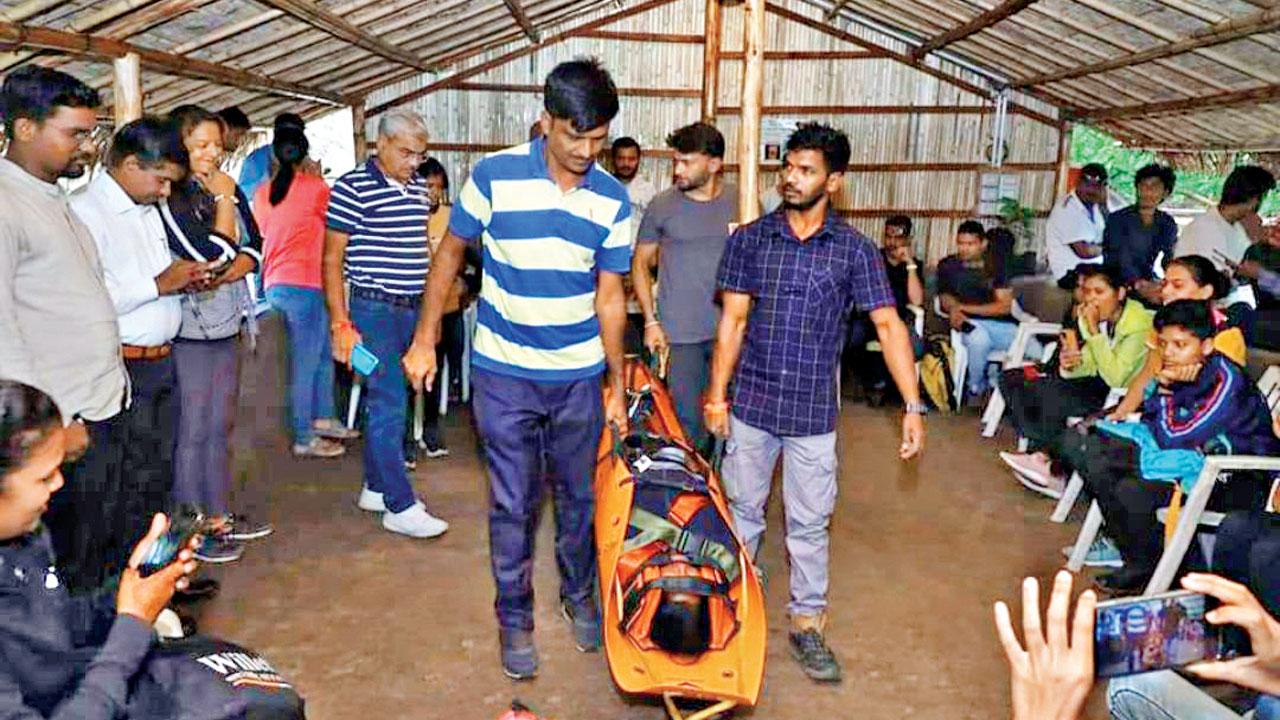
Members of the Shivdurga Mitra Lonavala participate in a rescue training session at Chhatrapati Sambhaji Nagar
>> Study weather conditions/predictions before a trip. Trained climbers avoid summertime in Maharashtra due to severe heat. Honeybees are more active and aggressive in summer, especially during treks around forts.
>> Carry a first-aid kit, but also have knowledge of how to use it.
>> Seek help of local villagers as they are familiar with the terrain, can warn you of risks and help during rescues. Carry contact details of rescue teams.
>> Always carry a working SIM card; be sure of which network works best in that region.
>> For waterbodies, one must know basic swimming. Non-swimmers should strictly avoid diving and swimming. Collect data about water depth, currents and tides.
Yogesh Umbre, professional climber and rescue expert
Sign up for these treks
>> Wander the night
Take a trip through the magical fort of Harihar and its history on this night and day trek.
ON May 18; 9.30 pm
MEETING POINT CSMT Station.
LOG ON TO bhatakna.com
COST Rs 499 onwards
>> Delight in nature
A nature lover’s favourite, the Bhimashankar sanctuary is filled with majestic hikes.
ON June 15
MEETING POINT Neral station.
LOG ON TO hikerwolf.com
COST Rs 1,999 onwards
>> Walk in the clouds
End the weekend amidst the clouds with a trek to Kalsubai, the highest point in the Sahyadris.
ON May 18 and 25
MEETING POINT Kasara Railway Station.
CALL 8799856476
LOG ON TO maharashtragadkille.com
COST Rs 1,299 (includes transport and accommodation)
>> Dive in for fun
Join experienced trekkers as they set off for an adventure to the Kal Mandavi water fall to bring the summer to a close.
ON May 19 Meeting Point Pritam Dhaba, Dadar East.
LOG ON TO adventuregeek.in
CALL 9004675388
COST Rs 1,199 onwards
Compiled by Shriram Iyengar and Devashish Kamble
 Subscribe today by clicking the link and stay updated with the latest news!" Click here!
Subscribe today by clicking the link and stay updated with the latest news!" Click here!










